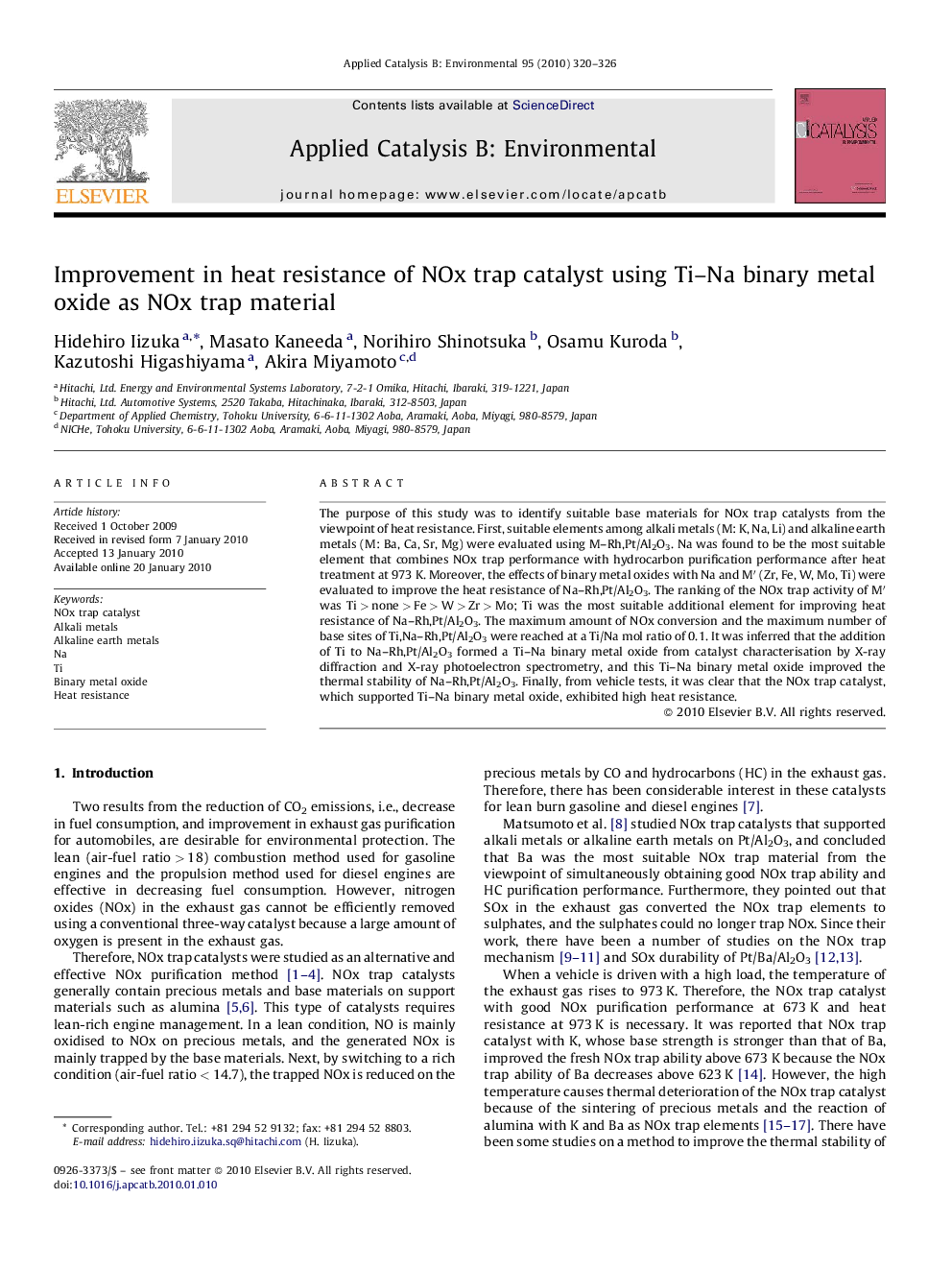| Article ID | Journal | Published Year | Pages | File Type |
|---|---|---|---|---|
| 47487 | Applied Catalysis B: Environmental | 2010 | 7 Pages |
The purpose of this study was to identify suitable base materials for NOx trap catalysts from the viewpoint of heat resistance. First, suitable elements among alkali metals (M: K, Na, Li) and alkaline earth metals (M: Ba, Ca, Sr, Mg) were evaluated using M–Rh,Pt/Al2O3. Na was found to be the most suitable element that combines NOx trap performance with hydrocarbon purification performance after heat treatment at 973 K. Moreover, the effects of binary metal oxides with Na and M′ (Zr, Fe, W, Mo, Ti) were evaluated to improve the heat resistance of Na–Rh,Pt/Al2O3. The ranking of the NOx trap activity of M′ was Ti > none > Fe > W > Zr > Mo; Ti was the most suitable additional element for improving heat resistance of Na–Rh,Pt/Al2O3. The maximum amount of NOx conversion and the maximum number of base sites of Ti,Na–Rh,Pt/Al2O3 were reached at a Ti/Na mol ratio of 0.1. It was inferred that the addition of Ti to Na–Rh,Pt/Al2O3 formed a Ti–Na binary metal oxide from catalyst characterisation by X-ray diffraction and X-ray photoelectron spectrometry, and this Ti–Na binary metal oxide improved the thermal stability of Na–Rh,Pt/Al2O3. Finally, from vehicle tests, it was clear that the NOx trap catalyst, which supported Ti–Na binary metal oxide, exhibited high heat resistance.
